Earlier this winter I lost 25 rabbits of various ages in a single month. Most were in a group I got for free from someone who needed out of rabbits quickly, but the losses were still heartbreaking. At the same time, a litter of my own started having severe GI problems, and I also had to cull a different breeder for a respiratory issue.
For a couple weeks I was going out to the rabbitry asking myself every day, “who’s gonna be dead today?”
This was brutal for me. Well, it’d probably be brutal for anyone. It made me recall the “death walk” talked about in several documentaries by confinement poultry farmers. They just expect something to be dead, daily. I homestead to nurture life, and for quality of life. This was the last thing I wanted to experience.
My Homesteading Nadir
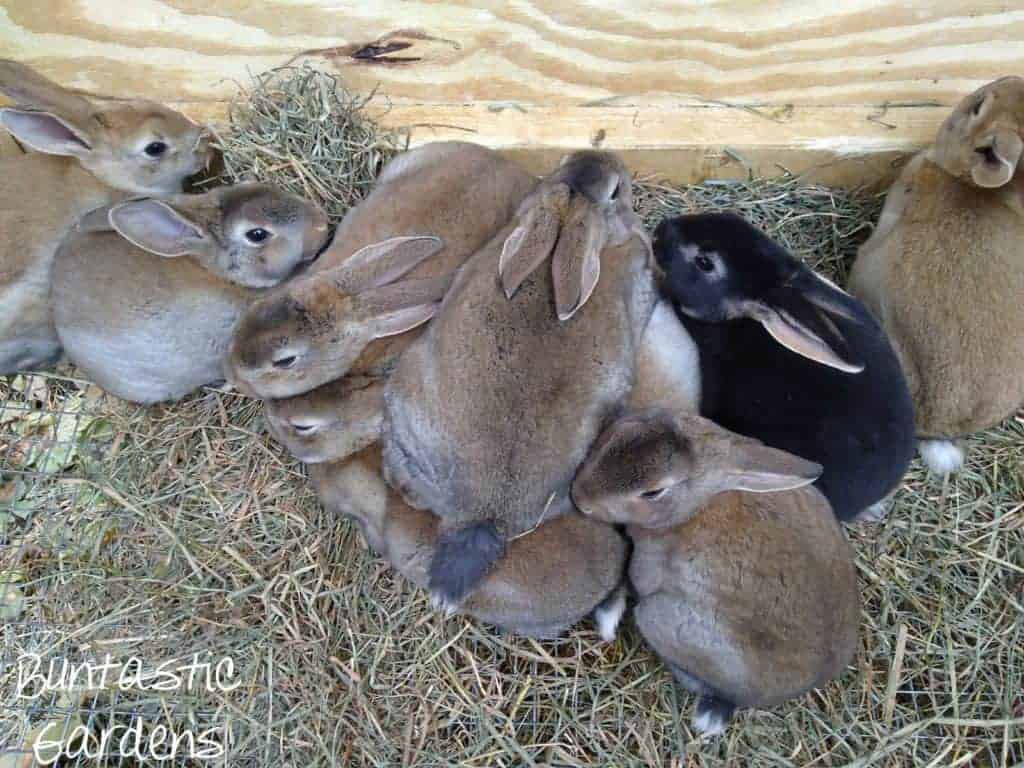
More than half this litter died
Unlike many, I don’t homestead for financial reasons, though I analyze everything as if it were a business. Those of you who read my previous piece about rabbits here know I’ve had a very difficult time of it, despite frequently being told I was doing everything right. I’ve had something like 85 non-harvest deaths since starting 18 months ago. That’s enough to wear anyone down. We can afford to keep going, I reflected, but should I keep going?
I also homestead for educational experience, for myself and the kids I homeschool. Well, death on this scale is certainly educational. Pain is how nature teaches us to adapt. What was I being taught? Maybe I’m just not meant to have rabbits, I told myself.
Giving up, escaping this failed experiment, and butchering everything was a clear option. The worst of the deaths were happening in deep winter, with highs of 0-7F each day. I just want to fucking give up, I thought.
What do you do when you’ve hit the rock bottom of homesteading?
The answer for everyone will be different, of course. The answer for myself could have been very different. I can only tell what what I did and what I’m doing going forward.
What I Did: Examining My Motivations
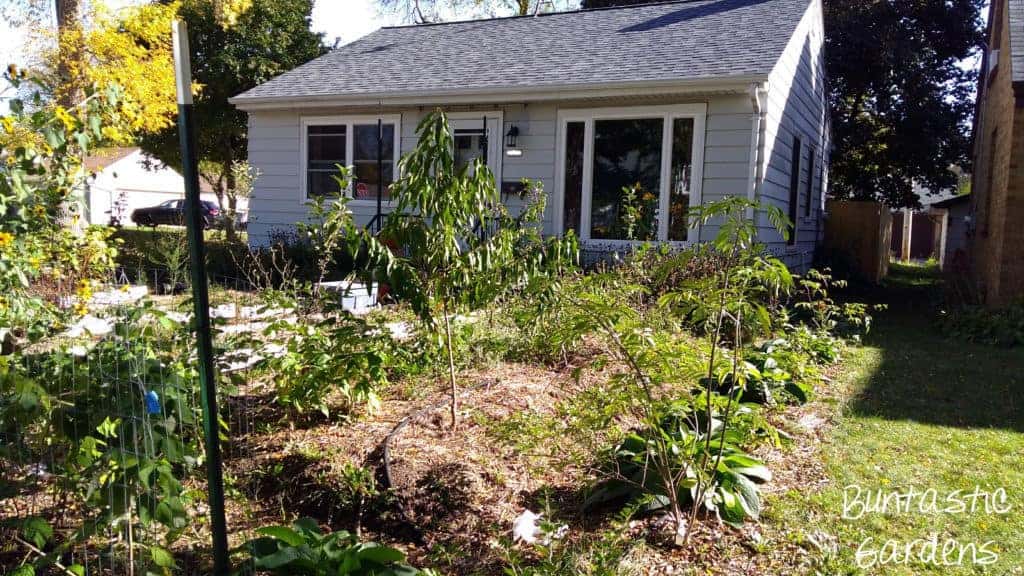
Was it still worth it?
Push forward. Scale Back. Completely tear it all down. Each option looked appealing. So the question was, why was I really doing this? I had to re-examine my original motivations for homesteading from the ground up.
Education
Our homestead started as a 4×8 raised bed I built for a science class with my newly homeschooled kids. From there, I quickly got hooked and started ripping up more and more of the yard. My kids have learned a lot from both the animals and the gardens.
The only way I have failed at this original motivation is keeping them as involved over time. My homestead tasks have become times for me to get away from the kids. When I do deep reflection, however, getting them involved is much more important to me and something that will make this an emotionally sustainable endeavor in the longer term.
The Challenge
Raising your own food is hard. Plants and animals both teach us how little we are in control. Living systems have a dizzying amount of variables. Increasingly over time I’ve stopped encouraging so many people to grow their own food.
At first this was because of my own discouragement as I fell towards my homesteading nadir. As I’ve come out of my low, I still feel much less “cheerleady” than other prominent homesteading authors, because conversation after conversation teaches me that very few people want to do this work.
Yet, for all the setbacks I’ve had, I truly deep down love the challenge. It’s undeniable when I search back through my memories and reflect on everything I’ve learned – both about the systems and what they’ve taught me about myself.
Learning about agriculture (I spend a lot of my time immersed in learning about a myriad of successful for-profit farm business models, not just homestead-scale gardening and livestock) stimulates my brain more than anything I learned in primary and secondary education, or even those three years working (unsuccessfully) towards a PhD.
Quality of Life
Homesteading does a lot to raise our quality of life. Livestock makes travel challenging, but for us that does not outweigh the benefits. Working in the garden is usually pleasant for me, though last year I overcommitted myself and got quickly overwhelmed, something I am fixing with the clarity my nadir gave me. Garden produce tastes amazing. It takes my cooking to a new level and I’m starting to learn the best natural medicines for our family’s ailments and our climate.
I like to complain about having to do chores several times a day during the winter but if I’m honest with myself, the forced activity and fresh air is great for my physical and mental health. Winters have been much more enjoyable since we added the rabbits and chickens. There’s a lot of beauty and peace to be had in winter once you get used to it.
Ethical Carnivorism
The first three motivations don’t require me to keep rabbits, and rabbits were the ultimate cause of my homesteading nadir. But I have become a big believer in being an ethical meat eater. In my view, that’s less about buying meat from farmers you trust (though we do that to get extra variety in our diet) and more about being intimately involved in the lives you take to sustain your own life, from birth through death. Just as vegetables must be harvested out of the garden to truly appreciate their vitality, meat should not come to us already wrapped in plastic. Every person who eats meat should be willing to participate in butchering at least once in their lives.
In my urban context, rabbits are the perfect meat animal. Quiet, low odor, and simple to butcher in a sanitary manner in a very small space. You can raise poultry in pretty small spaces, but none of those qualities apply to meat chickens. Quail might fit the bill, but everything I’ve read says they can be even trickier than rabbits, and I’m just not as interested in them as I am rabbits.
As someone interested in permaculture and regenerative agriculture, I also appreciate the fact that rabbit manure is very balanced for use on plants, and that their diet is heavily based on perennials. Even the commercial pelleted feed I currently rely on (plus a little hay) is mostly based on alfalfa meal. In genetically modified form, alfalfa isn’t the greatest, but it’s much better for land health than the grain that chicken and pork rely on.
Community
I’m part of several communities of rabbit-keepers. Folks across my groups have shared with me their own difficulties keeping rabbits. Many of them have given up, or have found themselves at a similar juncture to mine.
More than anything, people have told me they have been inspired to continue by me – after all, if David has all this shit going wrong and he still has rabbits, I can do it too! That extrinsic reason wasn’t enough to keep me going, but it was strong enough to give me pause in the nadir.
With community support and encouragement, I didn’t go on a wild, unfettered butchering spree. I kept as many rabbits alive as I could through the bitter cold and dark of the solstice. As discussion threads grew and blossomed, a number of potential solutions were proposed.
More than anything, as I explored solutions, I knew I wanted to keep going. Even if I ended up using the most extreme scorched-earth solution of completely starting over, it wasn’t going to be the end. It would just be a new beginning.
What I’m Doing: A Plan of Attack for 2018
None of my intrinsic reasons for homesteading in general or rabbits specifically had been negated. The educational and quality of life benefits were as valid as ever. I still valued a good challenge, and wanted to produce ethical meat for my family. My wife and I also, crucially, were willing to keep putting in the financial resources despite the lack of a return, at least for another year or two.
Scaling Back
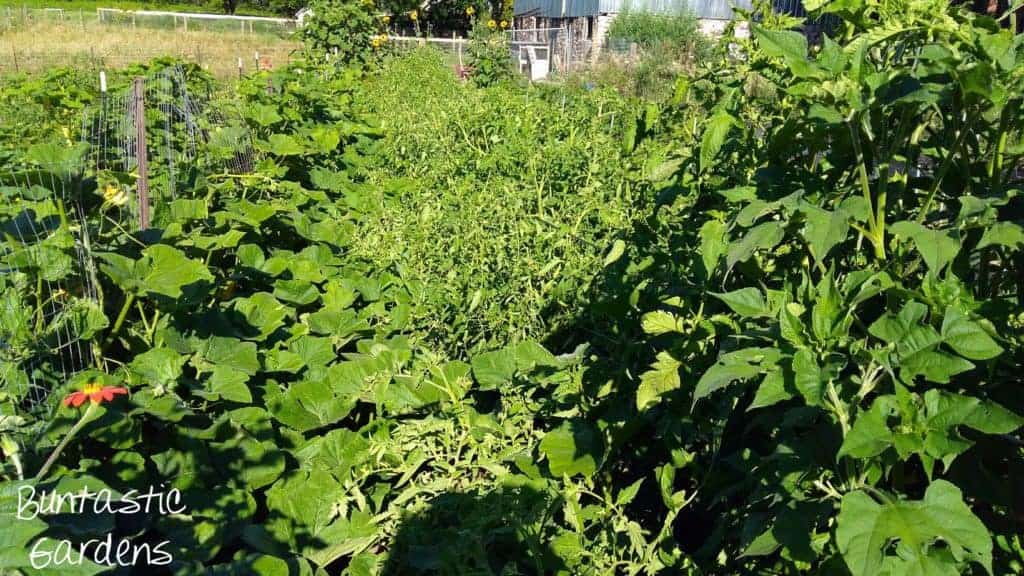
My offsite plot overwhelmed me.
For the last two years, I have grown additional crops at a large, off-property garden space. Realistically, that sucked up way too much of my time. I have to do a little bit of work this spring to clean it up for the owner, but giving that space up should return much of the joy I have working on my own homestead.
Diversifying Protein Sources

Chickens are so easy!
Chickens continue to be easy, reasonably productive except during this bitter cold spell, and we’re adding some extra point-of-lay birds to fully supply our family’s needs. Adding more birds is a small act of civil disobedience on our part, a calculated risk as we’ll be over the legal limit.
It’s hard to imagine an easier animal to care for than a laying hen. They’re incredibly worth it. And putting more emphasis on easy-care laying hens will ensure additional homestead protein production in the form of eggs while I continue to improve my rabbit meat production systems.
The (Tiny, Fluffy) Elephant In The Room
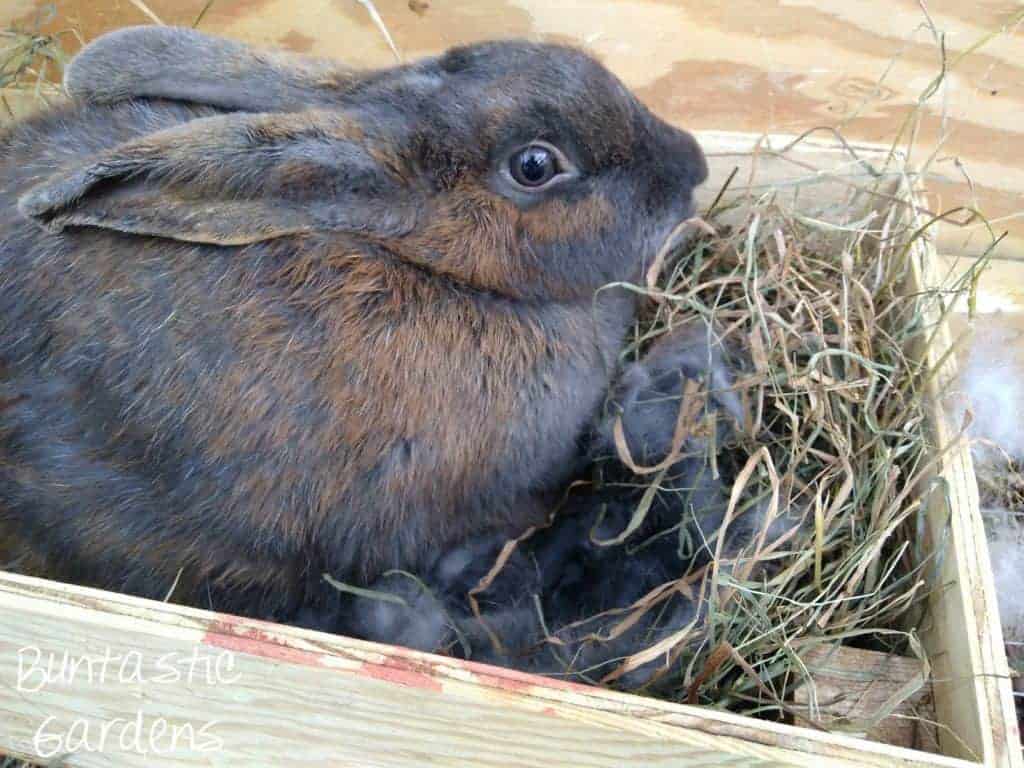
Stronger rabbit stock will help prevent future losses.
Rabbits were the ultimate cause of my homesteading nadir, and I knew I had to make some difficult decisions. First I took a hard eye to the stock I still had and made some strategic decisions about who to keep.
Additional research led to information about a medication that should completely solve my most severe rabbit health problem, but I’m holding that as a last resort. A number of people from my community offered some great herbal remedies, some of which are backed by extensive scientific evidence. I will be testing those remedies first.
Lastly, I have been talking to a breeder about some replacement breeding stock I’ll pick up in the summer. Better stock is almost always the best solution to rabbit-keeping problems.
Have you ever hit rock bottom with your homestead? How did you get through it?
20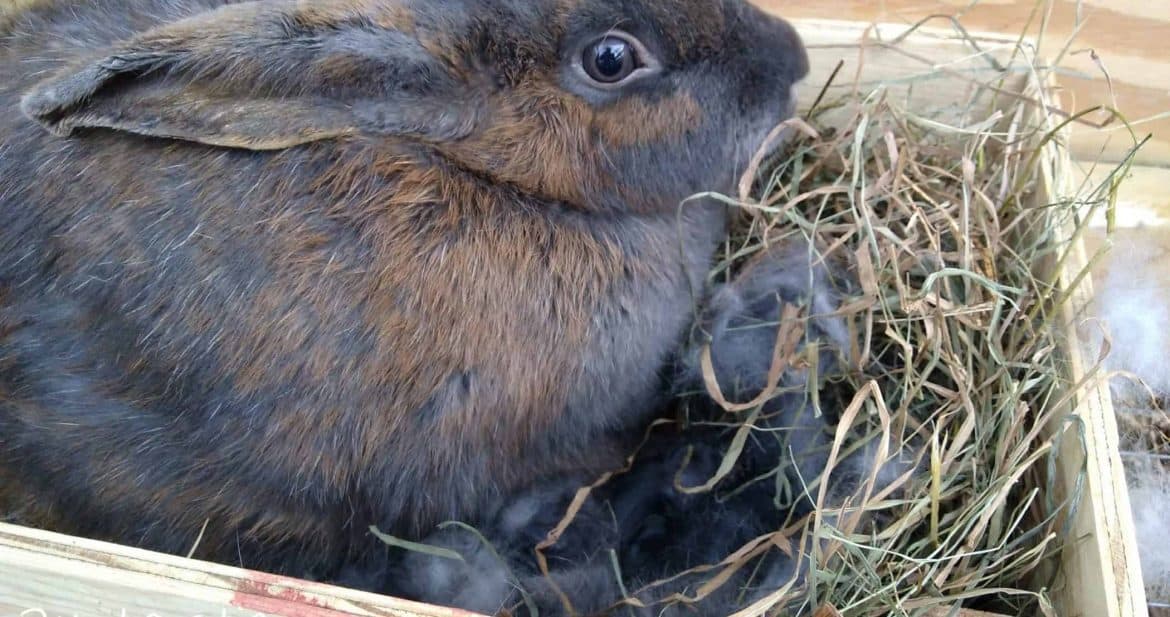
I’m glad to hear that you have a plan for 2018! It is easy to get overwhelmed, especially in the first few years of a homestead. Spring is always tough too, chicks and ducklings; man are they hard to walk away from when I go to the feed store to pick up a few things!
Last year our drake and hen hatched all 11 eggs. Holy shit, suddenly we went from two ducks to 13! The five drakes went to the auction, we kept the original pair and the six hens. With that many ducks we decided that our six laying hens could find a new home as well. You can only eat so many eggs ;0)
I have learned over the years to keep my vegetable garden reeled in to the items we truly enjoy eating, I still plant a few new varieties each year but not like I used too. I also start cleaning, amending and prepping beds as early as January (weather permitting here in the PNW) if I wait later than that then I feel rushed and overwhelmed all through Spring and Summer.
The worst day on the farm/homestead is better than most days in the high stress career I had for 12 years! That is what I remind myself on the tough days.
Amen to the worst day on the homestead being better than most days in a conventional job. I worked a high stress, low pay job for 10 years but have been full time at home for a couple years now.
On eggs, I dunno, we eat a LOT of eggs. We might have enough to sell with 16 hens but not that many.
On the garden, my plan has changed so much from the fall I need to get out there and start marking out beds. I’ve ordered my seeds but the ground here in southern WI is frozen until early March at the earliest. I can’t start even brassicas indoors until mid March since I haven’t yet built any low tunnels.
It’s good to reflect and be flexible enough make those changes to keep your homestead enjoyable as well as productive, good for you! We have meat rabbits and are in our first winter with them. I did so much reading and research beforehand and we still needed to entirely change our set up once they were actually living here with us. We bought the best stock I could find, and so far it has been paying off, although the price per pound of meat will be pretty high for the next year or two! Good luck with 2018, may all your tomatoes ripen!
Yeah, rabbits are expensive until you really get going and your infrastructure amortizes. My cost/lb is currently about $4.75 on feed, and a bit under $7.50 if I amortize capital costs over 5 years. Right now I’m feeding a bunch of unproven does, but I’m hoping to get my numbers quite a bit better by the end of 2018 🙂
What breed(s) do you have? I have NZ in blue (possibly on their way out), Rex in Castor and Black Otter, and Silver Fox.
I know squat about rabbits, but I can tell this you following long experience in the horse industry and having ranchers for family: if you keep animals long enough, at some point you are going to have a totally shit time. I have had family members had to have their cattle herd, which they built up over the course of a lifetime, destroyed by the government down to the last cow. Somehow, some way, they had picked up a disease despite living the best of cow lives….and that was it. A lifetime of genetics and caring for these animals and they were gone. My totally shit times have been far less tragic than that, but I’ve had my fair share.
I think keeping healthy animals is a kind of practice. Like most practices, there is usually a surfeit of enthusiasm and reading and trying new things and better ways and watching other people’s videos and so on….which gives a lot of things to try….but the only way you get experience is by doing it for long periods of time and sussing out what works and what doesn’t. And of course fluke tragedies can strike, which really tests a person’s resolve.
I took a year and a half off of having chickens following struggling with a dysfunctional flock I inherited with the house. I learned a lot before I started again and things have been dramatically more successful and rewarding this time around. It’s great to be forced out of the house on cold mornings to go check on them. It doesn’t always feel like it, but I agree that it is fundamentally good for us.
At the end of the day, most of us do not have a financial reason to do this – not really. So, it should happen on a level that is rewarding and mostly fun that helps balance out the rest of our lives – that looks different for everyone.
I gave up on chickens on my acreage some years ago due to predator issues. At some point I had overlapping flocks of ollder hens, laying, younger hens, and meat birds, up to 99 birds at peak. Then we had a horrid time with predators, one disaster after another. Bears, skunks, raccoons are all bad enough but the worst of all was other people’s domestic dogs. Then I did just meat birds for a few years. My luck only had to hold for a few months. Another disaster occurred with the neighbours’ dogs. I gave up for now. The run needs to be completely rebuilt. I lack the skill and energy to do that. I am waiting to leave the acreage and move into the village. Once ensconsed in a small house with a big sunny yard I intend to garden my brains out and have the allowed 4 hens in a super safe mini coop. By the way, as a former city dweller I take great pride in my ability to butcher chickens. There is something honorable about doing your own dirty work.
Ien, I’m guessing the only solution with that many predators would be permanent electric fence.
Thanks, all, for the ‘wonderful’ stories. You know, sharing the ‘disasters’ seems to be so much more heart warming, than the ‘successes’. hmmm….
The internet is full of people who want you to believe there is “one easy hack” to “create the XYZ of your dreams.” That’s because the reality – years of work punctuated by occasional horrible heartbreak and occasional screaming success – is too much commitment. No clicks in it. But in the trenches, I think hearing these things reminds those of us who are trying that it’s not some personal failure when we have system failures. It’s just kinda….how it goes. Like, for everyone. And “Oh, it’s not just me? Other people get knocked on their ass too? You mean….I’m not alone?!” is always the most heartwarming feeling, isn’t’ it? <3
I don’t know about rock-bottom, but this summer the turkey poults kept dying for no reason in the brooder, then when we finally got them outside and they refused to coop and refused to roost (first is normal, second not), the skunks started picking them off. We harvested 6 out 22 we started with. Not cost effective, not happy. And the two hens we’d nurtured through two winters were impossibly bad mothers, losing 6 out of 7 chicks within a week. Once the skunks took the tom, we decided to start over completely with turkeys and chickens in the spring and have enjoyed the winter off (still have ducks and geese, but they are less annoying). We too expanded beyond our parameters of happiness and are dialing it back to leave room for more fulfilling things. I live in a hiker’s paradise and have to make room to make that happen too.
PS.
hens=turkey hens, now turkey sausage
geese hens raising their own goslings are the easiest and cheapest birds to raise if you can tolerate the noise. They are also the hardest to butcher and pluck. Rillettes are worth it.
How ironic. For me it happened this week when I had it confirmed that a waterfowl hatchery sent me what are as best as I can figure production grade goslings instead of the higher quality ones (that I paid for). So I’ve spent the last year raising a trio of geese that don’t meet breed standard. And I can’t keep my trio AND the replacements they are offering.
Or it was last year when 75% of my duck flock got wiped out in a single night.
Or last summer when the chest freezer died and we lost the chickens I had harvested along with the 12 doz eggs stored for winter.
Well that was cathartic 🙂 I’m sure most people working towards sustainability would agree there are TOO man times when it just seems like a pointless pain in the a$$.